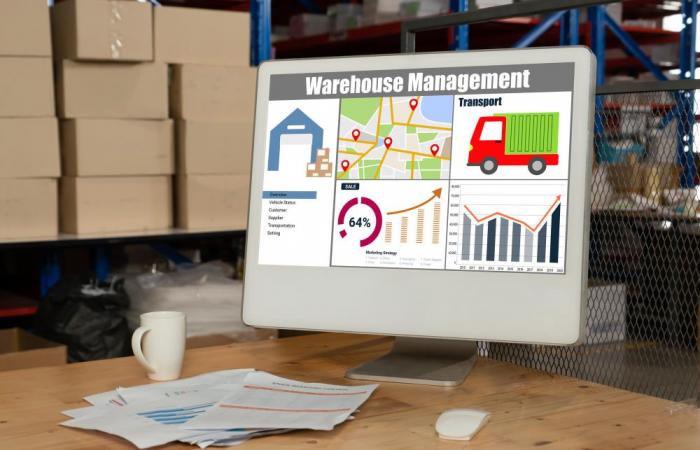Logistics directly influences customer satisfaction, profitability and operational efficiency. Optimizing logistics can therefore bring significant benefits in terms of costs, lead times and quality of service. Here are ten tips to maximize the efficiency of logistics in your company.
1/ Analyze and optimize logistics processes
To improve logistics efficiency, start by analyzing your current processes. Identify friction points, bottlenecks, and inefficiencies. Use process mapping tools to visualize and understand workflows. Once you’ve identified the issues, implement solutions to optimize those processes. For example, simplify order fulfillment steps or reorganize the warehouse to reduce unnecessary trips. Process optimization not only saves time, but also improves accuracy and customer satisfaction.
2/ Invest in advanced technologies
Advanced technologies, such as automation, artificial intelligence, and the Internet of Things (IoT), can transform logistics. Warehouse management systems (WMS), enterprise resource planning (ERP) software, and real-time tracking solutions can improve the accuracy, speed, and visibility of logistics operations. For example, AI systems can optimize delivery routes to reduce transportation costs and lead times. Using robots in warehouses for sorting and inventory management can also increase efficiency and reduce human error.
3/ Train and involve staff
People are a key element of logistics efficiency. Make sure your employees are well trained on best practices and technologies used. Involve them in the continuous improvement process by collecting their ideas and encouraging them to come up with innovative solutions. For example, regular training programs on the use of new technologies and inventory management techniques can significantly improve logistics performance.
4/ Optimize inventory management
Effective inventory management is crucial to avoid overstocking and stockouts. Use automated inventory management systems to track inventory levels, turns, and demand trends in real time. Adopt strategies such as just-in-time (JIT) or reorder point inventory management to maintain optimal inventory levels. For example, by using predictive algorithms, you can anticipate changes in demand and adjust your inventory levels accordingly. Inventory optimization helps reduce carrying costs and improve product availability for customers.
5/ Improve transport planning
Transportation planning is another key area to maximize logistics efficiency. Use transportation management software (TMS) to plan, execute, and track shipments. Optimize delivery routes to reduce distances traveled, travel times, and fuel costs. For example, TMS can suggest alternative routes in real time to avoid congestion and delays.
6/ Establish strategic partnerships
Partner with reliable and efficient logistics partners to improve your operations. Establish strategic partnerships with carriers, logistics service providers, and suppliers to benefit from their expertise, networks, and technologies. For example, partnering with a 3PL logistics service provider can provide benefits such as flexibility, cost reduction, and access to advanced infrastructure. Strategic partnerships also help share risks and optimize available resources.
7/ Use data analysis
Data analytics is a powerful tool for identifying trends, opportunities, and issues in your supply chain. Collect and analyze data on delivery performance, lead times, costs, and service levels. Use this information to make informed decisions and continually improve your operations. For example, analyzing delivery tracking data can reveal inefficiencies in transportation routes. Most importantly, predictive analytics can help anticipate future needs and plan resources accordingly.
8/ Adopt a sustainable approach
Sustainability is becoming increasingly important in logistics. Adopt environmentally friendly practices to reduce the carbon footprint of your operations. Use low-emission vehicles, optimize packaging to reduce waste, and adopt sustainable transportation strategies. For example, using electric vehicles for urban deliveries can significantly reduce CO2 emissions.
9/ Follow trends and innovations in the sector
The logistics industry is evolving rapidly, with new technologies and constant innovations. Stay up-to-date with the latest trends and embrace innovations that are relevant to your business. Attend trade shows, conferences, and webinars to connect with experts and learn best practices. For example, the adoption of drones for last-mile deliveries is an emerging trend that could revolutionize logistics. Blockchain technologies for supply chain traceability and transparency are also promising innovations.
10/ Continuously evaluate and adjust
Continuous improvement is essential to maximize logistics efficiency. Regularly evaluate your performance, identify areas for improvement, and implement corrective actions. Use key performance indicators (KPIs) to track your progress and adjust your strategies accordingly. For example, quarterly logistics performance reviews can help identify successes and areas for improvement. Continuous evaluation helps you remain agile and responsive to market changes and customer needs.






